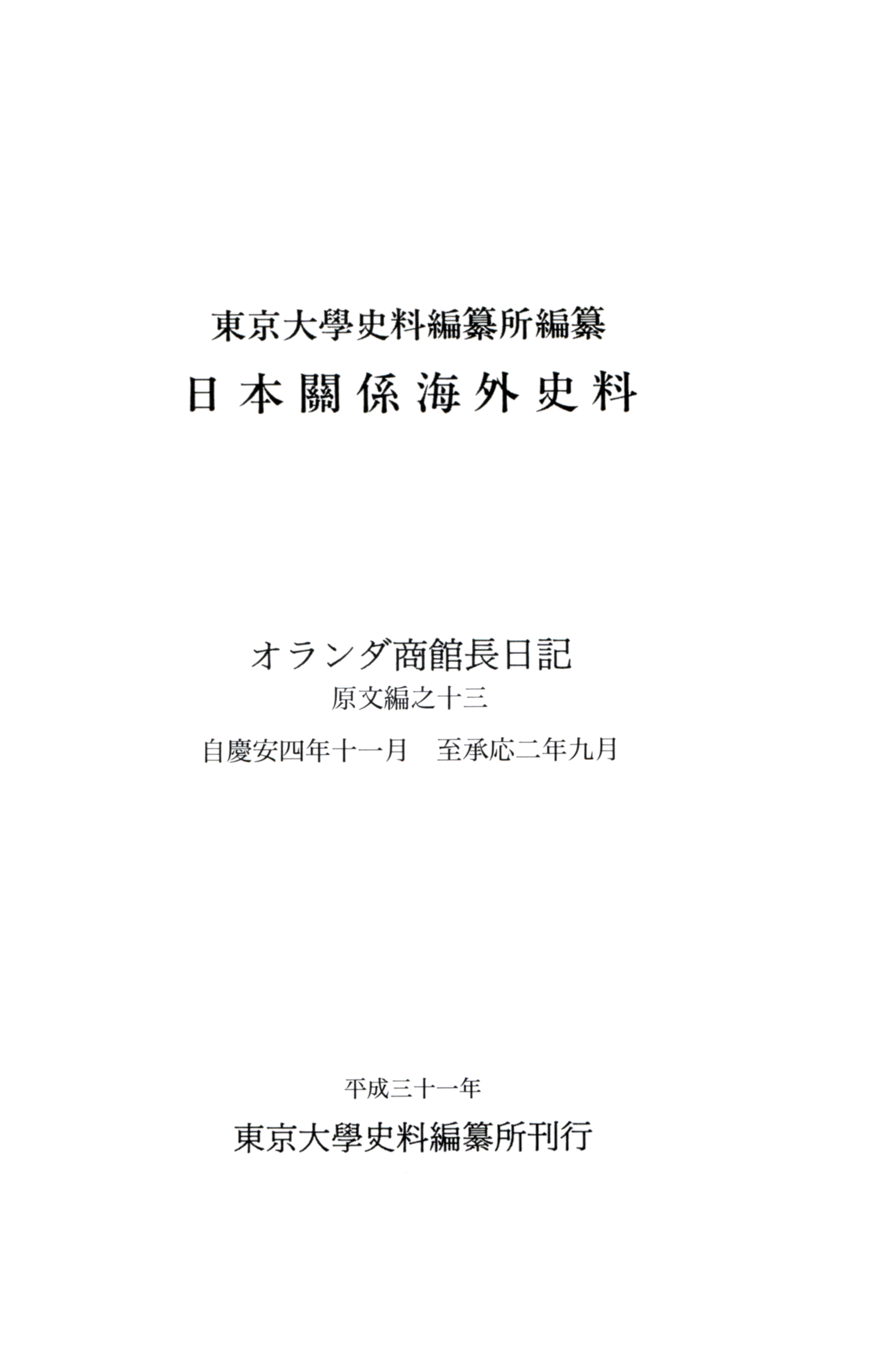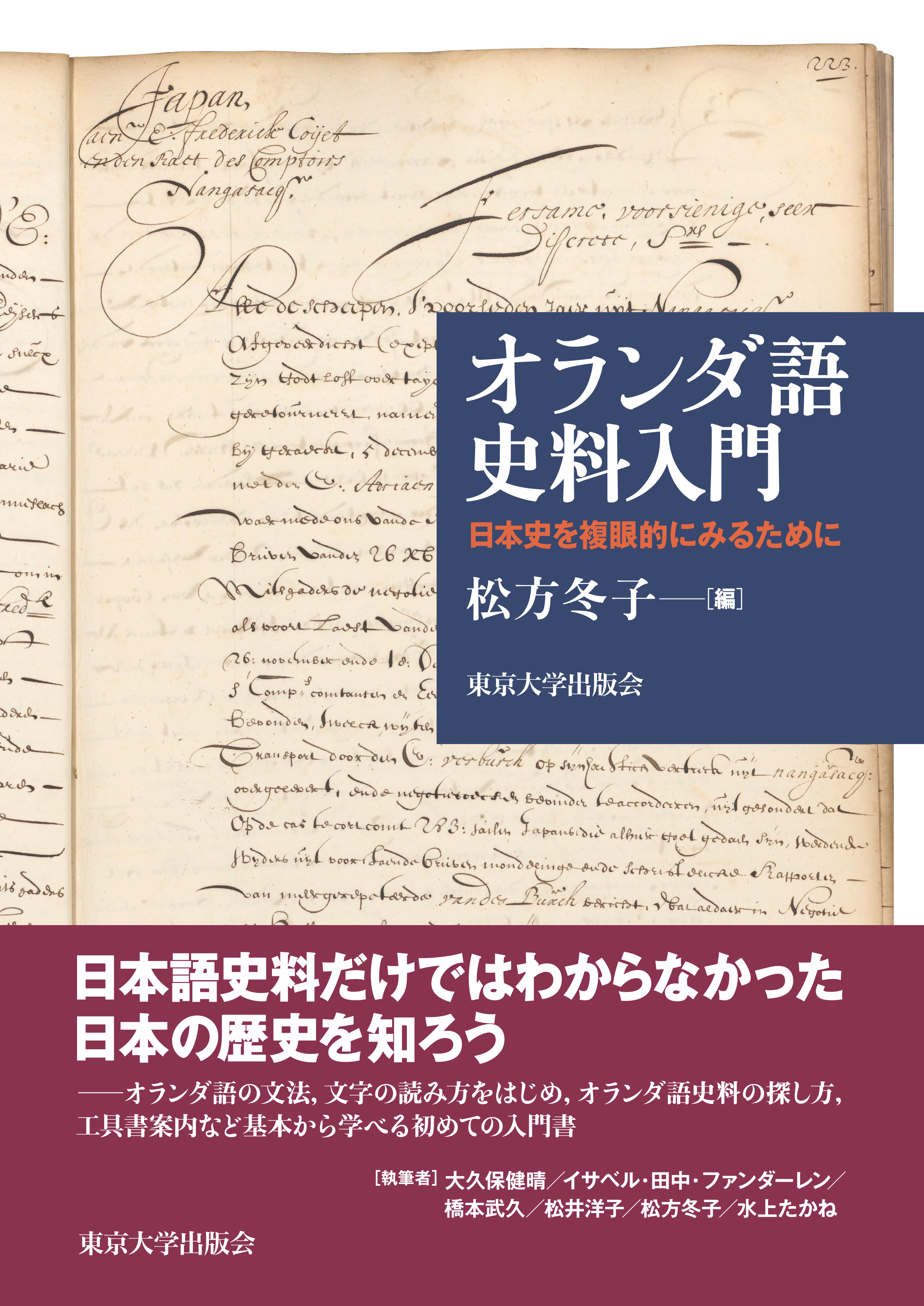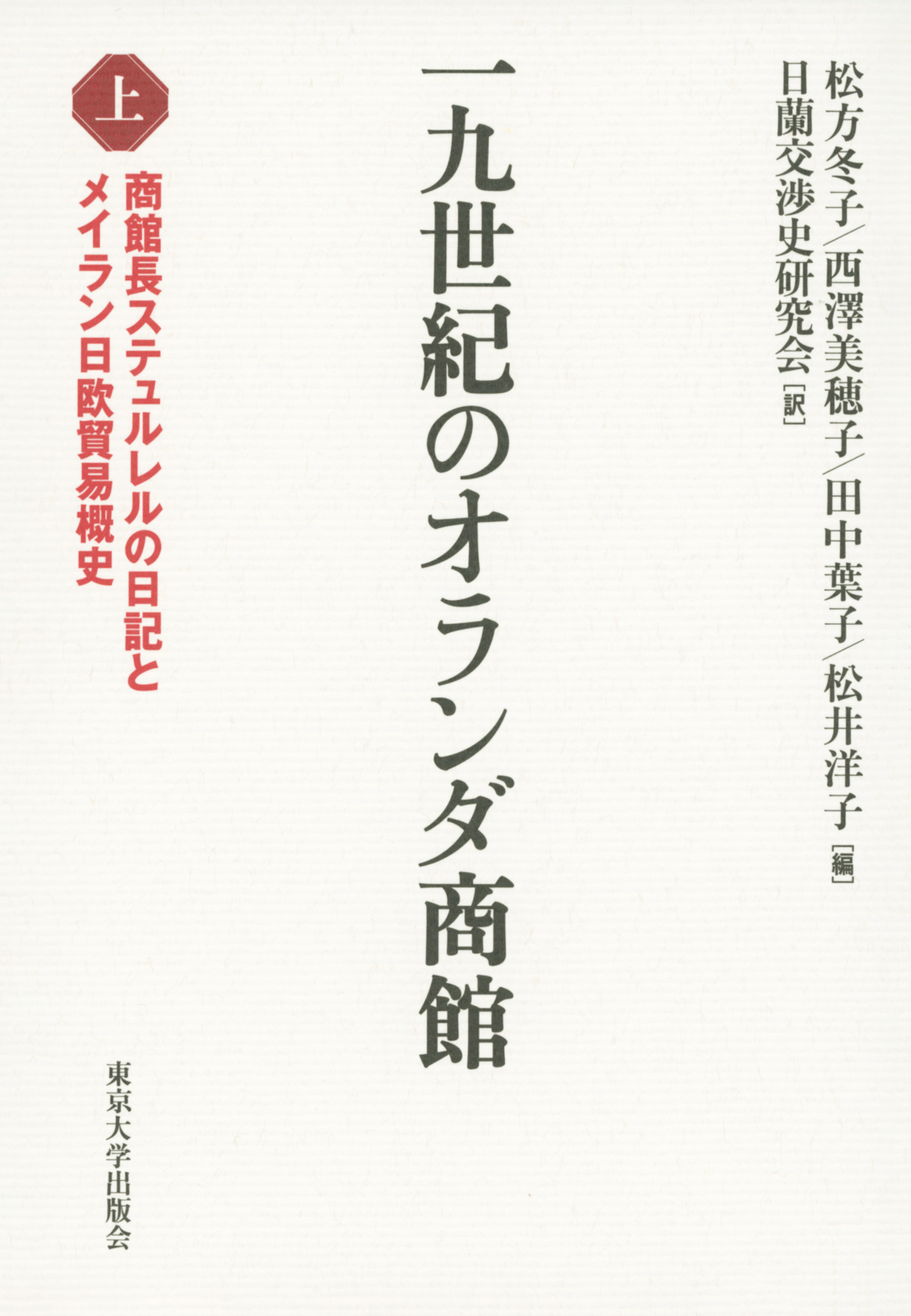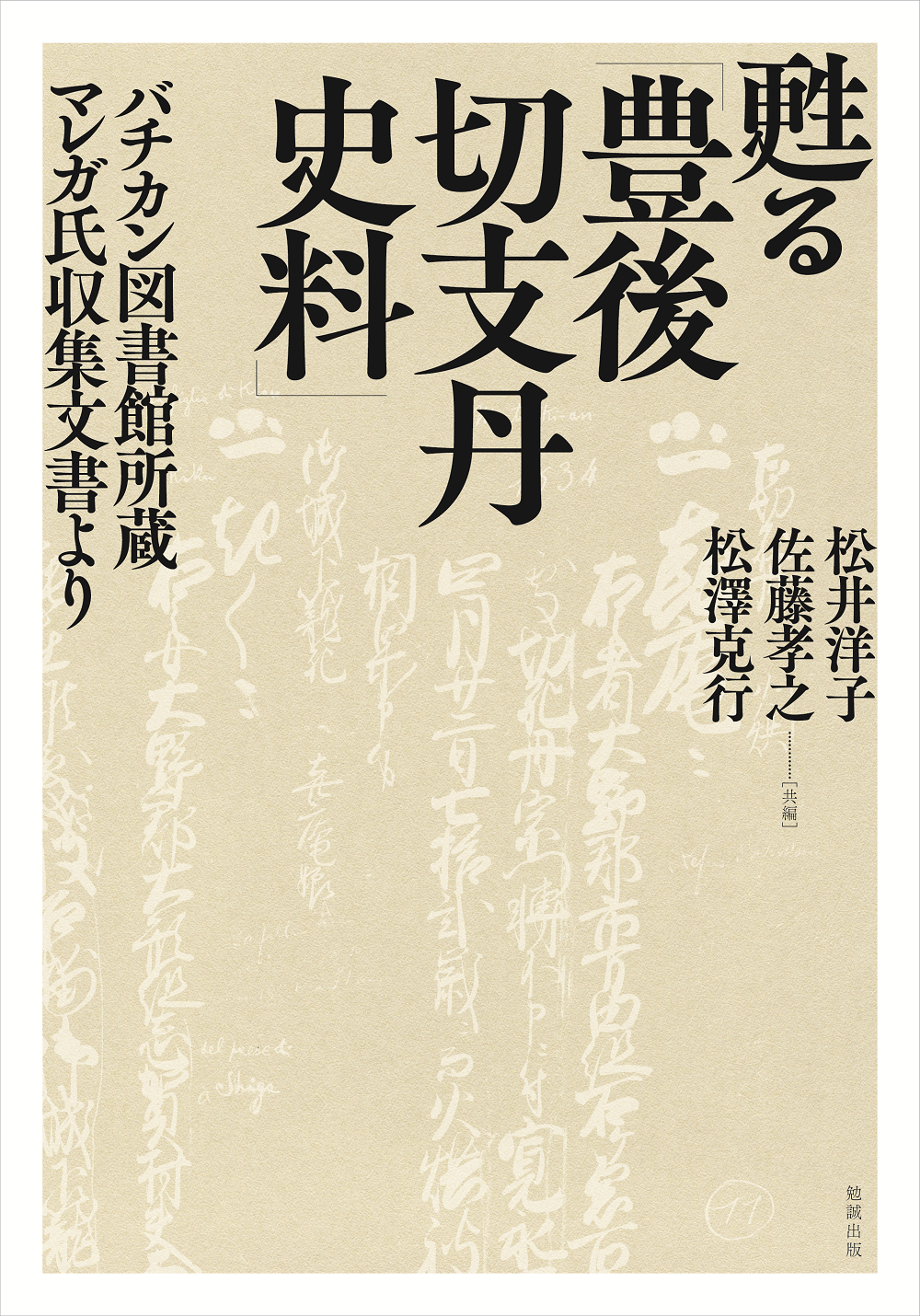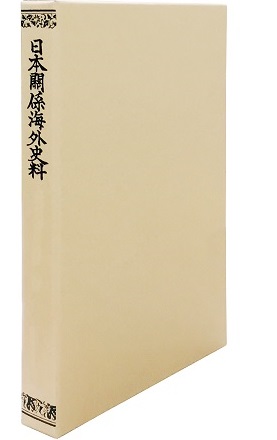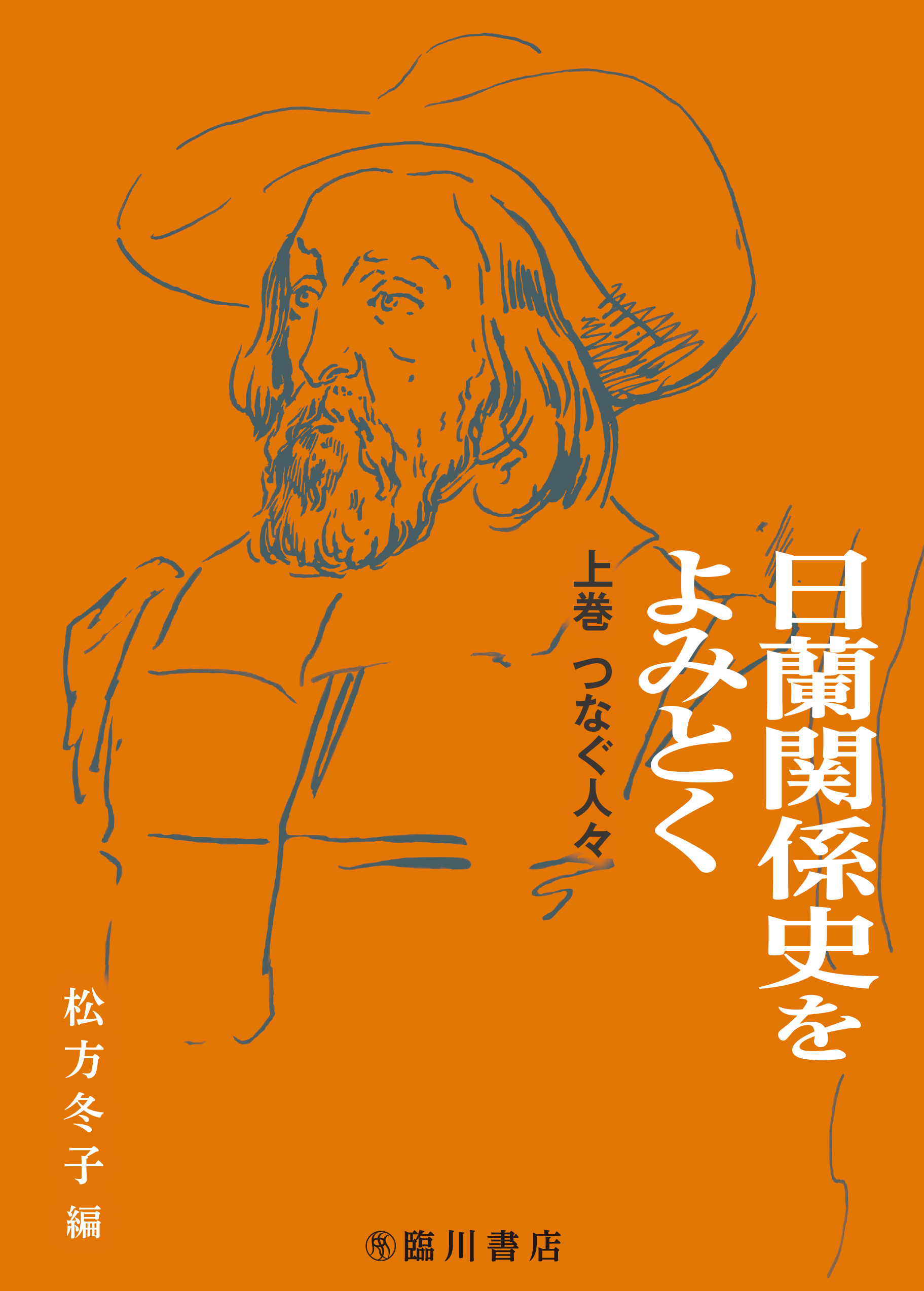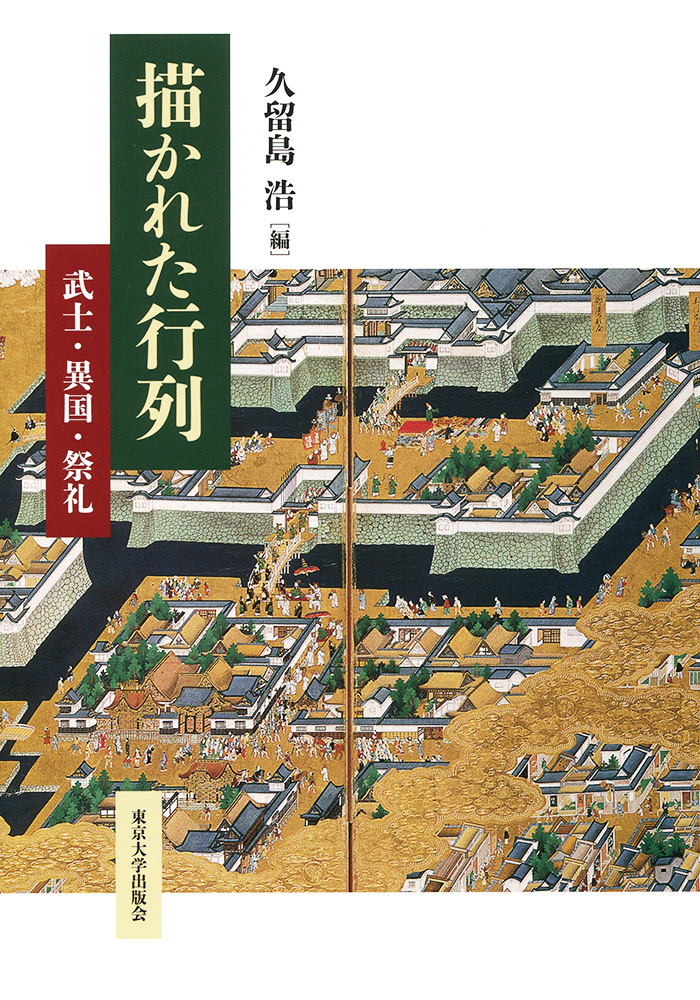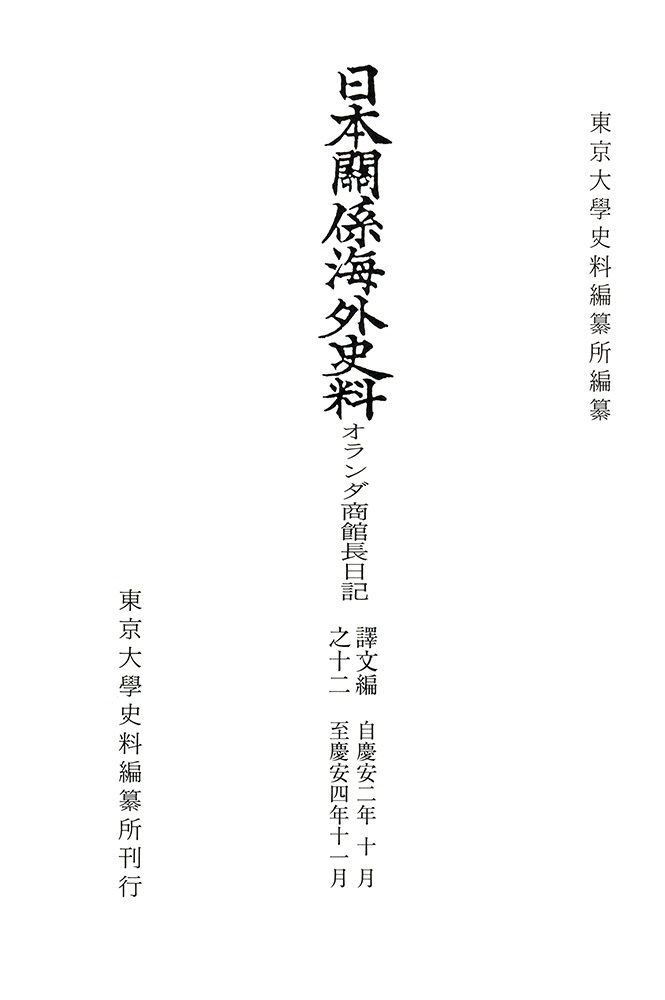
Title
Nihon Kankei Kaigai Shiryō: Oranda Shōkan-chō Nikki Yakubunhen no 12 (Diaries kept by the Heads of the Dutch Factory in Japan. Vol. XII November 5, 1649 - December 31, 1651)
Size
365 pages, A5 format
Language
Japanese
Released
August 13, 2015
ISBN
978-4-13-092782-6
Published by
University of Tokyo Press
Book Info
See Book Availability at Library
Nihon Kankei Kaigai Shiryō: Oranda Shōkan-chō Nikki Yakubunhen no 12
Japanese Page
During the Edo period, the Dutch were the only European traders who maintained commercial ties with Japan. Starting in 1633, the chief factors of the factory (trading post) in Japan kept official diaries for more than two hundred years, which are now held in the National Archives in The Hague. These diaries include many descriptions on specific events and people’s thoughts at the time. Comparing these diaries with contemporaneous Japanese documents enables analysis of Japanese foreign relations from multiple perspectives.
This volume contains official diaries kept by three chief factors of the Dutch East India Company who were stationed at the Deshima Factory between November 5, 1649 and December 31, 1651. Anthonio van Brouckhorst’s diary covers the period from November 5, 1649 to October 25, 1650, while those of Pieter Sterthemius and Adriaen van der Burgh cover subsequent periods up to November 1, 1651 and December 31, 1651, respectively. The original Dutch version of these diaries was previously published in 2013 as part of the same series.
At that time, the Dutch had fallen into disfavor of the third shogun Iemitsu, who was of the opinion that the Dutch should have sent an envoy as a token of gratitude for his clemency shown to the crewmembers of the ship named Breskens. This ship had visited Nanbu (in the northeast part of Japan) in 1643, which was quite unusual. However, the Dutch had delayed the dispatch of such an envoy. Moreover, Iemitsu also suspected that the Dutch Governor-General in Batavia had assisted a Portuguese ship that came to Japan in 1647 against shogun’s orders.
The envoy and his delegation finally arrived in Japan in August of 1649, and started their journey to Edo at the end of November. They had to wait a long time for an audience with the Iemitsu due to his being ill and, even then, were only able to be received in audience by the heir to the shogun and the councilors in April of 1650. In the diaries, we are able to read the thoughts and actions of the chief factor who successfully led the mission. The comprehensive instructions of the Governor-General to the ambassador, included in the appendix to this volume, give detailed directions that even extending to proper behavior, and reveals the Dutch people’s understanding of Japanese power holders and Japanese society.
Meanwhile, the diaries include various entries on the procedures of trade, such as the settlement of the wholesale price for Chinese raw silk, bidding on other imports, and negotiations related to the export price of copper, camphor, stone blocks. The diaries also provide extensive information, brought by Dutch ships and Chinese junks, on the state of affairs in Asian waters and in European countries.
This volume, Diaries kept by the Heads of the Dutch Factory in Japan, is of a series of basic source books on Japanese history compiled and published by the Shiryō Hensan-jo [Historiographical Institute] under the name of Nihon Kankei Kaigai Shiryō [Historical Documents in Foreign Languages relating to Japan]. The original texts are Dutch manuscripts from the seventeenth century that often contain spellings that are different from those used today and that differ from person to person and include East Indian vocabulary as well. With the cooperation of Dutch native researchers, we have attempted to offer accurate transcriptions with annotations and complete Japanese translations.
We have also published the diary kept by the head of the English Factory in Japan: Diary of Richard Cocks, 1615-1622 (completed), and Jesuit letters concerning Japan (in progress). All of these are important historical source materials that provide a vivid picture of intercultural contacts in the 16th and 17th centuries and offer valuable insight into this age of “globalization.”
(Written by MATSUI Yoko, Professor, Historiographical Institute / 2017)



 Find a book
Find a book


